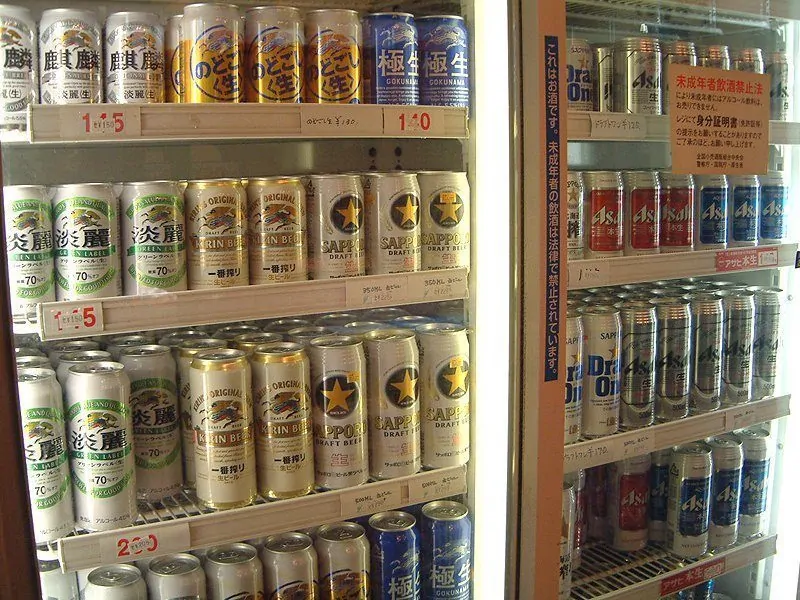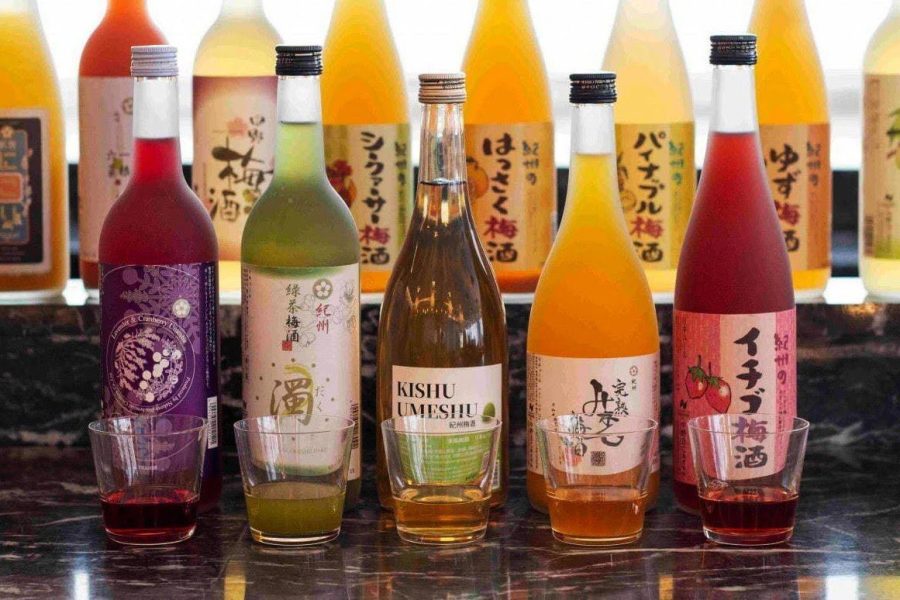An izakaya is a place to go after work is finished to drink alcohol and share light snacks between friends or colleagues. Suppose we want to look into the origins of this type of establishment. In that case, one must look back to the Edo period (1603 C.E. – 1868 C.E.), in which a sake merchant who was serving a tasting of several of his beverages in the corner of his shop decided it would be a nice touch also to serve local delicacies with the alcohol.
It was such a good idea that soon, local merchants were meeting after closing their shops to discuss the various doings of the day, and the rest is history.
Until the 70s, they were an oasis for salarymen—middle-aged men who worked for companies. However, a new generation, including women in the workforce, started to make their way into the izakaya. Today, you’ll find that these establishments host many different types of groups, all of which want to unwind and have a good time.
While, traditionally, these establishments were found in Japan, you may find some version of them anywhere a large population of Japanese emigrated to work. So that means that you’ll find them in many major cities.
They may cater to different cultural needs, but the izakaya concept is still at the core—a place to relax, enjoy, indulge and unwind from a long day.
What Do We Eat at an Izakaya
There’s a significant variance in what is regionally favored. Izakaya in other countries may also cater to a broader range of tastes. However, what is assured, as, in most types of drinking establishments around the world, the fare will be relatively inexpensive and satisfying.
Here’s a sampling of what kind of izakaya food you can find in Japan:
Okonomiyaki
This means “As You Like It.” It’s typical in Osaka but can be found elsewhere. It’s a pancake, which may be grilled at the table as dictated in its hometown, made of flour, eggs, and other undistinguished things.
While it’s crunchy on the outside and chewy on the inside, it isn’t the star attraction of the dish. Atop the pancake maybe pork belly, shredded cabbage, squid, and other savory items. It’s all drizzled with kewpie mayonnaise—made using only the egg yolk—tonkatsu sauce—a combination of Worcestershire sauce, oyster sauce, and sugar—and a bit of katsuobushi, or bonito flakes.
Ikayaki
This dish comes with associations of street vendors, who sell it on sticks. It is a soy-marinated whole squid that is grilled whole and then served sliced into rings. It’s very simple and satisfying.
Korroke
Part of the tradition of where you may drink to excess is the serving of fried foods. Korroke is like fritters or croquettes—made with mashed potatoes and crab meat, then crusted with panko breadcrumbs.
Karaage
It’s fried chicken, but with a signature twist—these bite-sized pieces are coated in potato starch. That gives them a lighter, less greasy texture, which everyone can enjoy.
Gyoza
Potstickers would be the closest thing to which one could compare these dumplings. Stuffed with ground pork and vegetables, they’re served with a sauce that consists of chili oil called rayu, soy, and rice vinegar.
Tebasaki
Originally from Nagoya in the Chubu region of Japan, these double-fried, batterless wings are a significant hit. They’re tossed in a savory-sweet sauce made from mirin, soy, and sake, finished with a sprinkling of sesame seeds.
Yakitori
This is a dish well-received by people from a wide variety of cultures because many have some variants of chicken on a stick. However, there’s one unique aspect of Japanese culture. It’s grilled over white charcoal, imparting a smoky flavor without too much flame.
Unlike many Western cultures, quite a few parts other than the meat are used to make these grilled chicken skewers, including the heart and kidneys of the bird. Kushiyaki is a variant of this dish, using either other meat or vegetables.
Omusubi/Onigiri
Made with slightly salted and vinegared rice, these packets are perfect for the izakaya. The seaweed bundles are stuffed with salmon, cod roe, or pickled plum.
Other dishes served may be sashimi, noodle dish as yakisoba, edamame, goma-ae, grilled fish or raw fish, salads, tofu in the form of agedashe dofu or hiyayakko, and various versions of tsukemono or pickles. There are, of course, specialty or themed izakaya, where you may order things, such as Japanese “school lunch” items, but these are somewhat rarer.
Seating Charges
This may be one of the more confusing customs around food. A seating charge is also known as otoshi or tsukidashi in the western Kansai region. These aren’t found in fast food or fine dining restaurants but have cropped up in Japan’s izakaya. Essentially, you’re presented with a small dish of food that you did not order but will be charged for. This is a way for the kitchen to ensure they receive your order.
As well, it’s a way for izakaya to ensure they receive their due if you are a light, slow drinker. It isn’t surprising that space should be considered in a country with urban centers as populated as they are.
It will usually be something minor, such as edamame or pickled vegetables, and should never be considered inconvenient. After all, it is great to snack upon as you consider your (yes) second drink. Usually, people order drinks upon sitting, calling “Toriaezu Biiru.” This means, “I’ll have a beer first.” And it is meant to go with the evening’s first toast, possibly the only one.
Getting a Table
While the premises of an individual izakaya is relatively tiny, they are, almost literally, everywhere. They are even in the train stations. So, getting a table at one isn’t a problem since you or your host will have an assortment of favorite izakaya from which to choose. It depends on your party size, but there is usually little to no waiting time.
In some establishments, you’ll be asked to remove your shoes. These can be kept in shoe lockers, and a pair of toilet slippers are provided inside washrooms. The toilet slippers are not meant to leave the bathroom at all, and doing so is a huge faux pas. While cleanliness and custom dictate the removal of shoes, the use of tatami mats or kotatsu-style, open seats should be seen as practical. It keeps them clean and reduces the need for mending or replacing.
Ordering
Unlike formal dining establishments, an izakaya acts as a tapas bar or pub, where people order more food as the night progresses. Ordering is a relatively unformed operation. Your server will usually keep a tab for your table. In the more modernized or chain izakaya, this might be kept as a chit or tab on the table. However, in the more traditional and smaller establishments, this is held by the person waiting for you.
The Meaning of Tabehodai and Nomehodai
Both of these translate as “all you can drink.” However, that’s a misconception. Tabehodia means “all you can eat,” and Nomihodai means “all you can drink.” The root term “-hodai” means unrestricted access to something, which is a helpful term. Over the past few years, it has become popular to offer happy hours, in which you may drink as much or as little as you want for a set fee. The corresponding term for food is also applied.
Smoking
While there were plans ahead of the 2020 Olympics to ban smoking in every eating establishment, there’s little news that this will change on schedule. As of 2020, people were still permitted to smoke in most izakaya, except for individual establishments that offered a non-smoking section.
Yes, it seems to go against the grain of many western countries. However, the spirit of the izakaya is intended to be a place where care may be set aside. In a culture that offers so much structure, playtime and the chance to unwind are taken seriously and breaking the habit of smoking while drinking may take a bit of time. If you are opposed to smoking, make sure you find spaces that offer a non-smoking section.
Paying
In traditional izakaya, your server will divide the total equally between everyone in your party, irrespective of how much or little they ate and drank. It’s not worth the fuss to go against the grain of this culturally-rooted collective behavior, so please be prepared for it. While most of the larger, modern izakaya also take credit and debit cards, many smaller operations do not. It’s always best to check before you are seated if you plan to pay with a credit card.
While the izakaya is often compared to tapas bars or pubs, it’s unique to Japanese culture. It evolved uniquely and without the influence of western customs. While today you’ll find many variants, the original template has remained unchanged for many generations.
Frequently Asked Questions about Izakaya Japan:
Izakaya is a Japanese-style casual drink shop like a Tapas bar where consumers order small plates such as noodle dishes, grilled meat, and french fries to share while drinking draft beer or soft drinks.
Among the most common izakaya foods are: Edamam, Karaage, Kushiyaki, Agemono, Sashimi or Makizushi.





Leave a Comment